Managing your CRM pipeline isn’t just admin work – it’s a key part of closing more deals. A messy pipeline means missed follow-ups, inaccurate forecasts, and wasted time. In this guide, you’ll learn 9 practical tips for better CRM pipeline management – from data hygiene to automation to smarter deal reviews.
Instead of haphazardly updating your pipeline with unqualified leads, invest in the right tools and processes to ensure you have the time to sell well.
This article delves into workflow optimizations, rules on maintaining CRM data hygiene, running productive meetings, and many more sales activities you can do better, so you have enough time to focus on selling.
1. Define clear exit criteria for every stage in your CRM pipeline
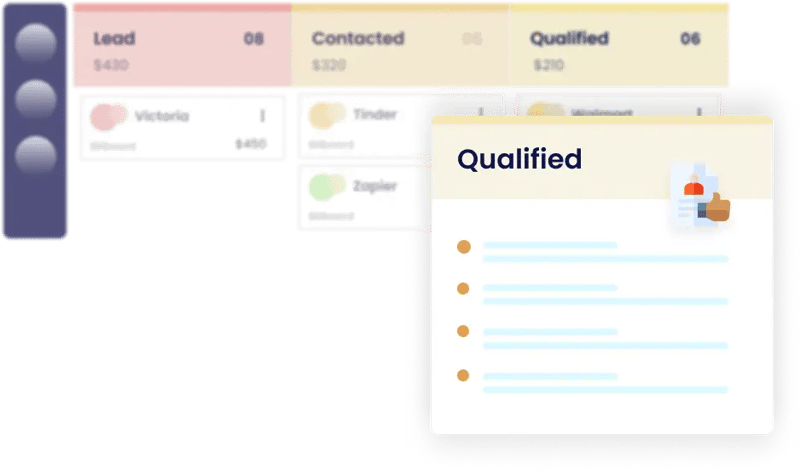 When should the lead move to the opportunity stage?
When should the lead move to the opportunity stage?
Imagine the chaos if every rep moves leads across the pipeline on considering different criteria like:
When has the prospect given verbal confirmation that they’ll take a call or when they confirmed by email that they’d attend the meeting?
Or after they’ve attended the meeting?
Or when you move them to the “qualified” stage in your pipeline?
Maybe, once they’ve told you their budget?
Or is it when you’ve confirmed they have a problem?
When exactly does a lead move from one stage to the next? Suppose you consider one factor as qualification, and the rest of your team considers different factors for the same stage. Wouldn’t you have a pipeline full of potentially unqualified prospects that “looks” healthy?
Defining the activities that reps have to perform or complete at each stage ensures that prospects are thoroughly qualified to move through the pipeline. Think of each pipeline stage as milestones in a marathon. You must run along a specific path to cross the milestones and reach the finish point. And the exit criteria are like defined paths that each rep has to take their prospect through to cross every milestone.
Setting up exit criteria for each pipeline stage:
To create your exit criteria, track what changes occurred when your now-customers moved down each stage of your pipeline.
Some examples:
- A prospect should be a >90% ICP match and have explicitly expressed interest in a demo/learning more about a solution to their problem during the initial contact to be considered as an opportunity.
- If targeting super ICPs is part of your sales strategy, you should only add those prospects who have confirmed their interest with you over email or call or LinkedIn into your pipeline and skip the qualification stage altogether.
- Checking all the boxes in your ICP checklist can be set as a criterion for the qualification stage.
- During the meeting/discovery stage, a meeting should have been conducted and completed, notes taken, a follow-up email sent of key points discussed, and all of it recorded in the CRM for the opportunity to move forward from that stage.
- During the deal closure stage, you could update the deal only once the opportunity has signed a contract or their payment has gone through.
2. Set time limits to prevent deals from stalling in your pipeline
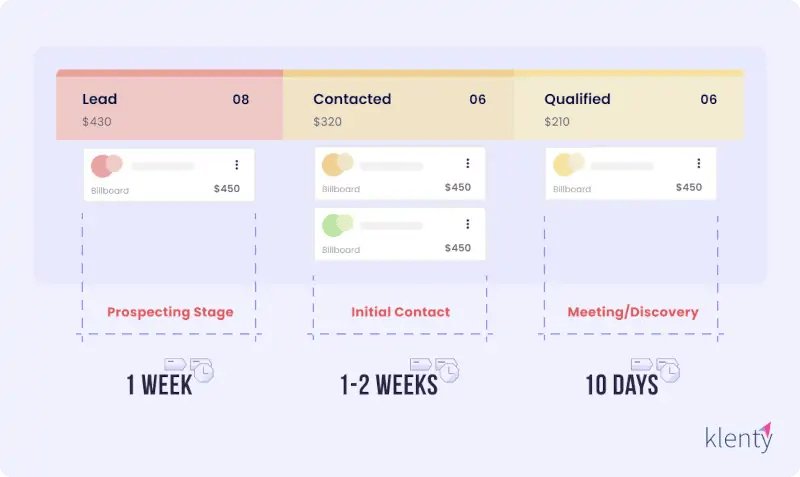
What keeps a rep up at night? Once promising opportunities collecting dust in a pipeline stage.
Most probably, it’s because the prospect hasn’t responded in any manner or you have not followed up enough times. We call it a deal rot when a prospect has remained in a pipeline stage for too long without any sales touchpoint.
We all have a million to-dos, phones always buzzing with hundreds of notifications, and a gazillion meetings to attend. So, naturally, prospects will undoubtedly forget that they were part of a demo with you in about 1 or 2 weeks. So, if you don’t proactively follow up once a week to remind them of the value of your product or service, they will simply forget your existence, and your deal will stay unmoved in time and in the pipeline.
So, how long is it before deals start to rot?
Every pipeline is different. The number of stages varies. The prospects change. The sales cycles may be longer or shorter. Start by creating a timeline that best fits your pipeline strategy. If you work with a 3-6 month sales cycle, you could check out the following timeline:
- Prospecting stage: 1 week. Complete prospecting in a week.
- Qualifying stage: This should happen simultaneously with the prospecting week.
- Initial contact: You have to give it 1-2 weeks with multiple touches spread across 15 days. It’s best to use a sales engagement or cold email software to set up sales sequences to schedule cold emails, follow-ups, cold calls, or LinkedIn touchpoints. Make sure you have 1-2 touchpoints every 4-5 days. So if you have not followed up with a prospect in 5 days, the deal starts to rot.
- Meeting/discovery: The discovery call should be set up and conducted within 10 days of the prospect confirming a meeting. If the prospect doesn’t respond in 5 days, follow up immediately, with an increasing gap between the follow-ups. Don’t follow up 4 times a week. Leave ample time in between.
- Demo/presentation: The presentation should be completed within 10 days of the prospect confirming getting one. And follow up at least 5 times, once in the middle and end of the first week, and once or twice towards the end of the second week. You could follow up on Mondays, too, but prospects would probably prioritize their tasks on Mondays.
- Handling objections: Set aside another 10 days to handle various complaints, ironing out the deal information, discounts, if any, etc. There must be at least 5 touch points distributed evenly across the 10 days.
- Deal close: The time here depends on the size of the deal you’re closing and the conversations you’ve had. If it’s a smaller deal, three days is enough before the subsequent follow-up, and more than 5 days with no contact from the other side would be a red flag. Meanwhile, if it’s a high-value deal, you shouldn’t wait more than 5-7 days after sending the quote to follow up.
3. Maintain CRM data hygiene to improve forecast accuracy
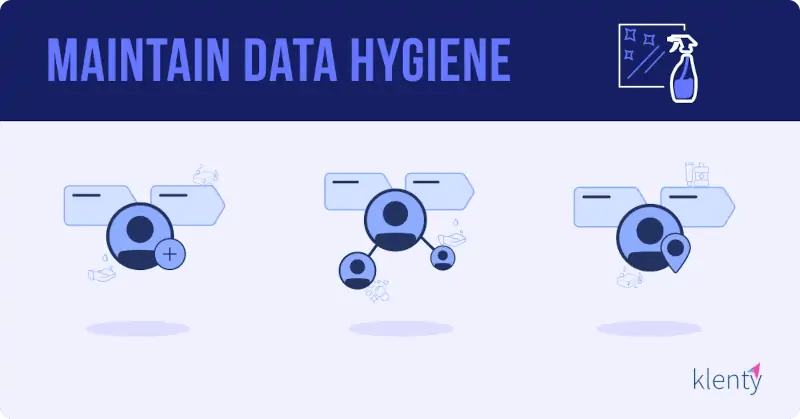
What’s dirty data? Incomplete prospect information, absence of notes after calls, deals rotting in stages without any sales touches, weeding out deals you know won’t move forward, and not updating the tasks for each lead in the CRM. The list goes on. And we’ve all been there, done that. No shame.
But proper documentation of various activities executed by reps is key to connecting the dots on the final picture of why we’re winning or losing deals. When you look back at the pipeline, you should be able to pinpoint if the reasons for losses were within the control or outside of it — was it not enough follow-ups or were the bad prospects not weeded out in time, etc.
Not having a neatly documented pipeline is more than just a neat freak’s nightmare; it bloats your pipeline and provides inaccurate forecasts.
Maintaining CRM hygiene also ensures — albeit indirectly — that you’re giving your customers a great customer experience. Customer service reps can refer to all the conversations representatives have had with their prospects to provide customers with personalized experiences.
5 tips to ensure reps maintain data hygiene
- Set up alerts when a deal spends too much time in a stage — that means you have to set up time frames that each lead has to spend in a stage
- Cap the number of stages in the pipeline to 6 to ensure you don’t crowd your pipeline view
- Set up pipelines according to different target markets, and geographies
- Incentivize data hygiene activities. Field Marketing Director, Hugh Allyn at FICO, an analytics software company, suggests nominating champions as a fun way to incentivize regularly updating opportunities in the pipeline.
- Create a separate pipeline for deals awaiting your responses — like people who requested feature updates/new features/add-ons/unexpected delays, etc.–otherwise, these deals could bloat your pipeline.
4. Automate CRM workflows to save time and boost efficiency
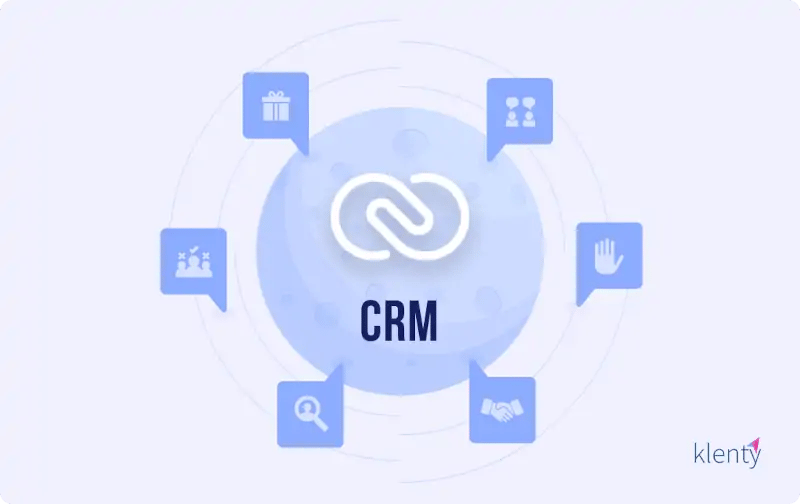
What if you didn’t have to manually reach out to every lead who came in through inbound channels? You could start them on a sales cadence as soon as they enter your CRM using automation tools or extensions.
You could save all the time it takes to manually track those who downloaded an ebook or signed up for a demo. Similarly, there are quite a few administrative activities that you could automate between your sales tool and the CRM, which opens up your calendar for more “selling.”
But it depends on the kind of CRM and the sales automation tool you’d use. Some tools are more flexible than others for workflow automations.
You could focus on prospecting and constantly replenishing your pipeline with fresh leads, personalizing your cold emails and follow-up emails.
CRM workflows you could automate inside your sales automation tool:
- Import a list of LinkedIn contacts as leads into your CRM
- Create a lead inside your CRM when a prospect engages with your outbound campaigns
- Start sales campaigns for inbound leads that were created in your CRM
- Set up reminders to follow up with prospects between opportunities to close stages
- Get Slack notifications when a lead signs up for a demo/enters the CRM
- Create invoices automatically when a lead enters the close stage
Pro tip! Here are the top tools to use for different stages of the sales pipeline: invoice management software, lead generation software, contract management software, sales engagement software, and payment collection automation software.
5. Use a sales engagement tool to standardize your sales process
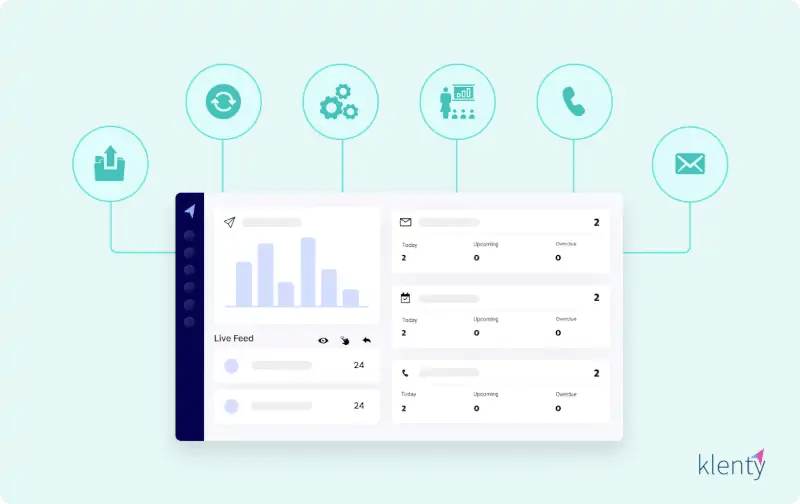
Following up is the gospel truth in sales. If you don’t follow up, you don’t sell. How you engage with your prospects determines the fate of your deal.
So, as your pipeline grows with leads, there will be more and more follow-ups to do for each of them at different stages of the sales process. And there are multiple reps following up with numerous prospects in their ways. They are not just following up. They’re engaging with prospects in their own lone-wolf kind of way. That’s never good news when you want to scale the team or get predictable revenue. If everyone’s doing their own thing, you won’t be able to predict revenue — which is a valuable metric to boost revenue.
Suppose you want to go big on the revenue. In that case, you must have a standardized sales process to replicate the sales activities that top performers are executing and ensure every rep is doing the same for every pipeline stage. That’s what will bring in the deals. Replicate, standardize, revisit and repeat.
What tool can help you standardize and scale the best-performing sales process? Sales engagement software. A sales engagement software allows you to send personalized cold outreach and follow-ups at scale, and record all these conversations back in the CRM.
So, why is a sales engagement software helpful in managing a sales pipeline?
- Make data-backed, informed decisions. For example: Run two outreach campaigns with two sets of email sequences and find out which one’s better engaged. And choose the better email sequence for all your prospects to enjoy higher engagement rates.
- Real-time sync of sales engagement data back to your CRM.
- Set up workflow automations between your platform and the CRM to help you focus on the tasks that matter most.
- Coaching all the reps to perform as well as the top performer since managers get a 360-degree view of everyone’s performance, shortfalls, and successes, and therefore can make informed decisions. They get such a granular view into their reps’ activities that they can not only view the history of the deal, all of the communication, and even the latest action executed for the deal.
Tools to use:
- For enterprise users: HubSpot Sales Hub, Salesloft, Playbooks from InsideSales, Apollo.io, Groove (only for salesforce users).
- For mid-level or startups: Klenty, Outreach, Autoklose, Woodpecker, Snov.io.
- For email automation: Mixmax (for Gmail users), Quickmail, Gmass, Streak.
6. Run focused pipeline reviews that actually move deals forward
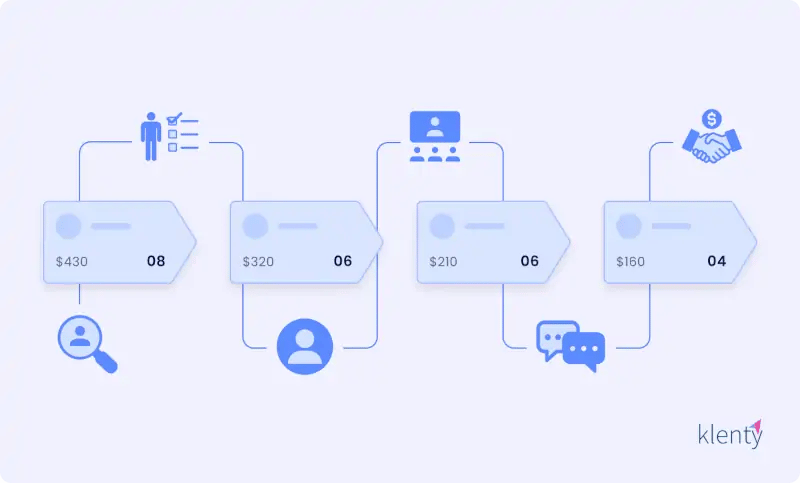
Without regular pipeline review meetings, everything falls to ashes. That sounds like an exaggeration, but it’s not. There should be biweekly, weekly, monthly, and quarterly reviews with the managers and the whole team to discuss the status of deals in the pipeline.
Of course, you can decide which ones you want to have with your team members and which ones should be done between the manager and the rep. Efficient pipeline reviews help AEs stay on track to close deals and spot if any, deals that are rotting at any stage.
During these reviews, managers can help reps improve their pitch or give insight on specific deals based on their experience dealing with similar deals. Top performers can share tips and tricks. But the hitch is, how do you run meetings that are productive for everyone involved?
After all, meetings have a bad rap for infringing upon a person’s ability to do deep-focus work. A survey run by Harvard Business Review authors Leslie A. Perlow, Constance Noonan Hadley, and Eunice Eun revealed that out of the 182 senior managers from different industries, a whopping 71% said that meetings were “unproductive” and “inefficient.”
2 tips for running deep-focus pipeline reviews:
1. Decide how many times the manager sets up one on one review meetings with the reps and how often. Should it be biweekly or weekly? What would you go over during these meetings? It depends on the size of your team and your business.
- Ideally, one-to-one review meetings should be held biweekly with reps where managers can go over the nitty-gritty of newer deals. During this discussion, you can tell your manager who you talked to, the prospects’ requirements, and the kind of expansion potential a particular deal has. While managers could help you understand more about the newer prospects, their buyer intent, how to pitch, and which deals you should focus on.
- Whereas monthly or weekly reviews can focus on deals that have already begun and are in mid-cycle with the whole team. This is the opportunity to focus on the deals stagnating at some stages. If your pipeline is polluted with rots, it can skew your pipeline value and conversation rate. So, decisions at this stage could revolve around moving deals out of the pipeline or identifying the reasons behind deal rots, or changing win rate percentage. A CRM plays a crucial role here because managers and sales heads can uncover the reasons for deal rot by looking at the pipeline stages at a granular level and seeing the activities executed by each rep for each deal — like emails sent, the time it was sent, the number of follow-ups made and when they were made.
2. To instill accountability among all parties involved and to ensure the execution of listed tasks, set up action items for every stakeholder at the end of every meeting. At the subsequent meetings, you could go over the action items of the previous meeting.
7. Track small pipeline movements to avoid deal surprises
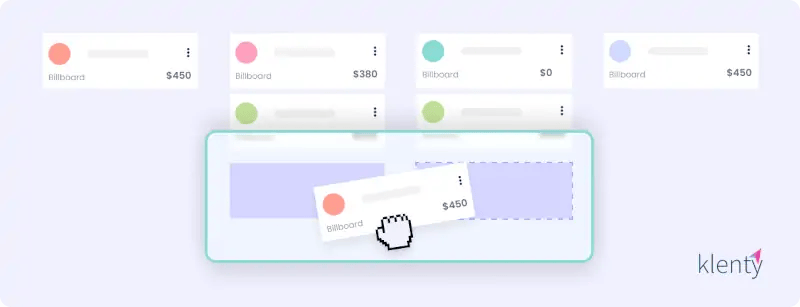
It can be easy to feel disheartened over the time it takes to move deals forward in the pipeline. Reps need to understand that that’s okay.
If your prospect is a perfect match for the ICP, you’ve sold your pitch and followed up regularly with valuable information about how they can benefit from using your solution. All you can do is wait. You have to step into the shoes of the buyer here. Buying a business solution takes time. There are multiple people involved in the buying process, like the users, the decision-makers, and in some cases, whole teams whose whole single responsibility is to buy solutions.
So yeah, the to and fro between different stakeholders and evaluations can take time to bear fruit.
How to not be overwhelmed by longer sales cycles:
- Use a sales engagement platform to automate all your outreach activities. This tool can schedule all the activities you need to execute for the day for different prospects in your pipeline — like sending a personalized cold email to following up via LinkedIn to dealing with a last-minute objection to closing deals. After your task list for the day has been ticked off, you just need to trust the process.
- Don’t bombard your prospects with follow-ups. Give them breathing time.
- Keep prospecting throughout the sales cycle. It will shield your quota from getting punctured with surprises at the end of the quarter.
8. Track these 5 pipeline metrics to stay ahead of targets

Depending on the size of your business and your priorities at the time, you could track a list of metrics that give you an overview of your pipeline health, your sales process, and your sales team. You have to sit down and think over the metrics most important for your growth at the stage and market your business is in.
On the selection of which pipeline metrics to track, Alex Birkett, the co-founder of content agency Omniscient Digital, tells spotio.com, “Since we’re a small agency, we need to guard our time resources most strictly. Therefore, common sales pipeline metrics like response rates or meetings booked are actually not great for us. We don’t have the resources to spend on meetings that don’t convert to sales. So we basically only look at three metrics:
- Qualified meetings booked (they have to reach all of our sales qualification dimensions)
- Signed proposal (this is when the client closes)
- Referral rate (this incentivizes us to do a really awesome job for current clients instead of spending all our time trying to fill the top of the funnel).”
Smaller companies would track cash flows in order to ensure they have a runway of assured revenue, while bigger companies would focus on the number of annual contracts, and renewals, and how they plan to collect them (big payments may be done on schedules).
6 important pipeline metrics you could look at tracking inside the CRM:
- Number of new opportunities entering the pipeline: The number of leads that have been freshly added to the pipeline. You should track this number regularly to ensure you have enough prospects to hit quota, irrespective of external influences. A pro tip for all reps is: to focus on the continuous replenishment of the pipeline.
- Number of deals in the pipeline: The number of current conversations reps have. In other words, the number of sales and marketing qualified leads, at various stages in the pipeline, that reps are engaging.
- Average sales cycle: Sales cycles indicate how long you are taking to close deals as opposed to how long they should be taking–granted, you have a base sales cycle length to work with.
- Average deal size: Average deal size helps you understand how your audience is maturing. If you’re a growing company, you could track what deals you’re attracting to stay afloat and what deals you have to track to enter the big leagues.
- Pipeline value: This indicates the value of the opportunities in your pipeline. Knowing this will help you accurately forecast your goals and be better prepared to reach them. To calculate pipeline value, start with the number of deals in your pipeline. Then, multiply that by your average deal size — for example, 40 deals x $5,000 average deal size = $200,000.
- Win rate percent: This is an obvious one. You could identify how the markets are doing if your win rate decreases. It’s essentially an indicator of something going wrong, which requires you to dig in. One example is if you’re exploring new markets, you’d want to find out first what your win rate percentage is in that market and change your messaging, positioning, or outreach strategy to something that suits the new changes.
9. Create a lost deal pipeline to learn and win back revenue
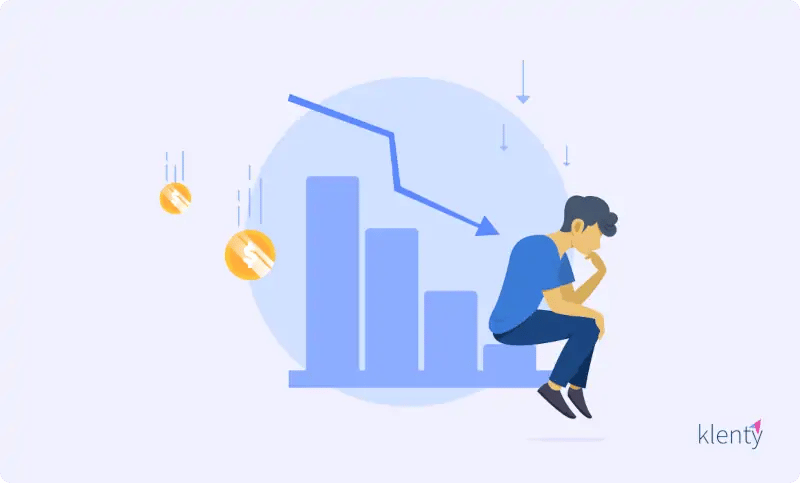
This is one of the most essential tips to run a tight sales ship. If all the stakeholders are working in silos and simply focusing on prospecting and closing deals at the moment and not doing much to review the lost deals, you might miss red flags or opportunities. We’ll explain.
What happens when you remove a lost deal from the pipeline? Do you just check them into the lost deal vacuum, never to be looked at again? Managers have to concern themselves with this: ‘Why did we lose the deal?’ Put on your deerstalker and start investigating. What lies hidden may be a new opportunity to revisit your messaging, discover a new use case, an untapped market, or even a lack of a particular feature. And the people who’d know best about why those leads didn’t convert are the salespeople who actually talked to them.
How to build the lost reason pipeline:
It might be difficult to build a process where reps mark the lost reason for each deal, considering they are mostly hell-bent on converting the rest of the pipeline.
So, set up a pipeline within each market segment or geography solely to provide the reason for losing the deal. This encourages a healthy feedback loop within the organization on why the deals were lost.
Various functions in your business, like product, business strategy, marketing, and customer success, are always looking to improve the solution or the messaging and are always in need of market feedback, so what better way is there to collect information from the people who were so close to buying your solution but didn’t. Reps could simply ask the leads for the reason for choosing another solution and note them down in the pipeline.
In short
Keeping your pipeline clean and updated won’t give you benefits right away. They are actually compounding in nature. To start off, you’ll be able to reach out to more people because of access to the correct information, and managers can give the right kind of feedback because of proper documentation of emails and calls. Meanwhile, revenue leaders can dive in with goggles to pinpoint what strategic undoing or revisiting needs to be done.
Frequently asked questions
Have questions about managing your CRM pipeline? Here are some quick answers to help you get the most out of your sales process.
CRM pipeline management is the process of organizing, tracking, and optimizing sales opportunities within a CRM system. It helps sales teams stay on top of deals, forecast revenue, and improve win rates by ensuring that each stage of the sales process is clearly defined and accurately updated.
Effective sales pipeline management ensures that your team focuses on the right deals, follows up consistently, and avoids stalled opportunities. It also enables accurate forecasting and better decision-making.
To maintain data hygiene, reps should regularly update lead information, log call and meeting notes, and remove stale or unqualified opportunities. Setting alerts for deal inactivity, limiting unnecessary pipeline stages, and rewarding consistent documentation are all helpful strategies. See tip #3 in this article for more best practices.
Top tools for managing your CRM pipeline include HubSpot Sales Hub, Salesloft, Apollo, and GetAccept. These platforms offer automation, engagement tracking, and customizable workflows to streamline pipeline activity and support scalable sales processes.
GetAccept integrates with your CRM to streamline the entire sales journey – from proposal to close. With features like automated follow-ups, real-time document tracking, and buyer engagement insights, GetAccept’s Digital Sales Room helps sales teams manage pipeline stages more effectively and increase close rates.




